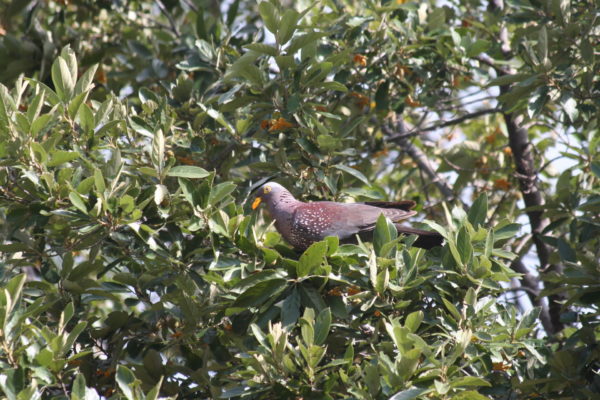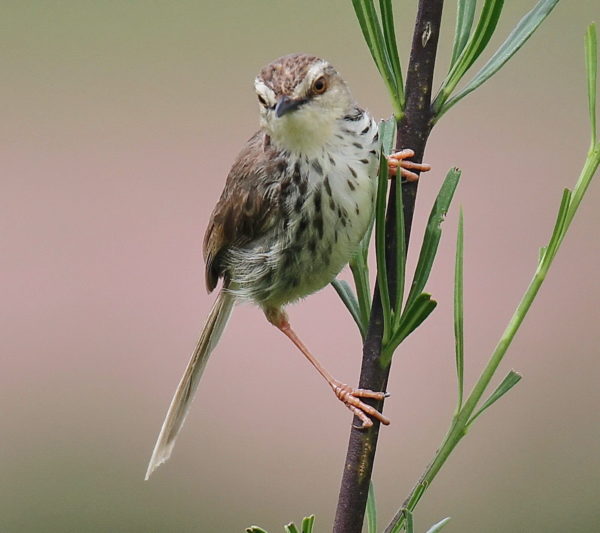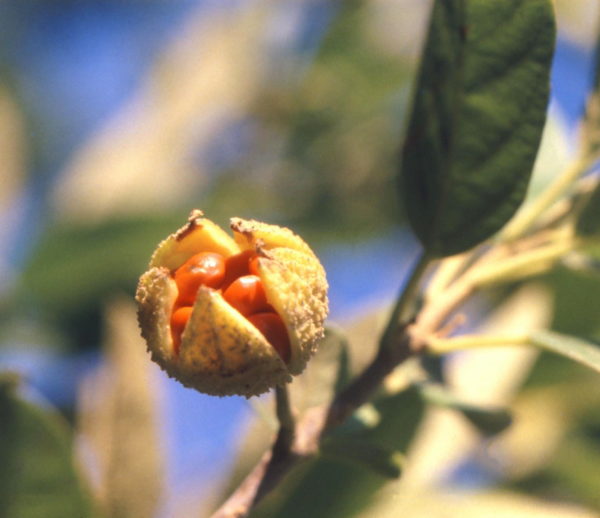Mid-summer is a minor lull in the bird world, and not just in Africa. The most obvious feature is the slackening of bird-song. Territorial boundaries have been settled, and the most important thing is collecting lots of food for chicks. So it is at the Cavern. In an admittedly very wet weekend there was neither sign nor sound of the Cape and Chorister Robin-Chats – “guaranteed” garden regulars.
The big Kiggelaria tree on the balcony was the hot spot. It was in full fruit, and well deserves its reputation of being one of the best of all bird trees. The fruits are an anonymous green until they split at the last moment to reveal a cluster of red seeds. This brought African Olive-Pigeons, sometimes 12 at a time, almost within touching distance of we spectators. This is the only time they ever emerge from the forest. Plenty of other species enjoyed the feast too.
In the same cluster of trees – 16 species, all bird-planted originally, within 6 square metres – a Cussonia spicata was also fruiting. The fruiting heads resemble green under-nourished mielies, and most of the seeds are picked while still green (they turn black if allowed), especially by Red-winged Starlings. The starlings also congregated on a nearby Canthium mundianum, again going for the unripe green fruits.
The Drakensberg Prinia has always been one of the Cavern specials, it being a narrow-range endemic with the Cavern grounds being probably the best place to find it easily. This weekend all expectations were exceeded with the finding of a nest. This would normally be nearly impossible, but a bird was seen carrying a small butterfly in its beak. It saw us, and began a round of behaviour that guaranteed that a nest was nearby. Just as cisticolas do, it flew from one bush top to another, then in a big irregular circle, intent on not giving away the nest position while we were watching. This went on for over five minutes before the prinia dived into the nest which was almost hidden beneath an overhanging bank.



